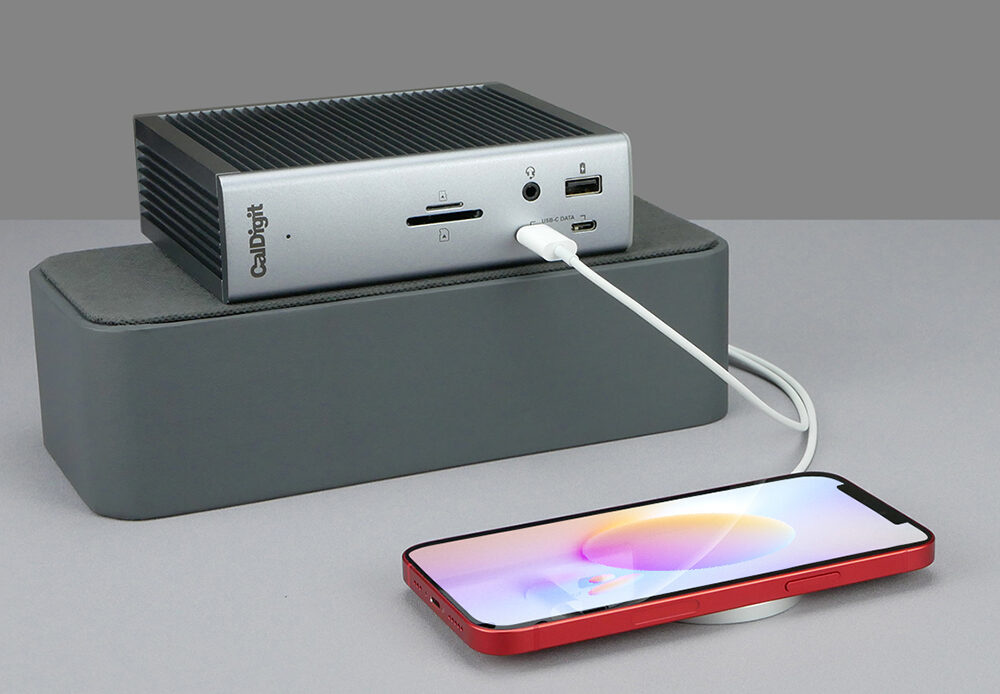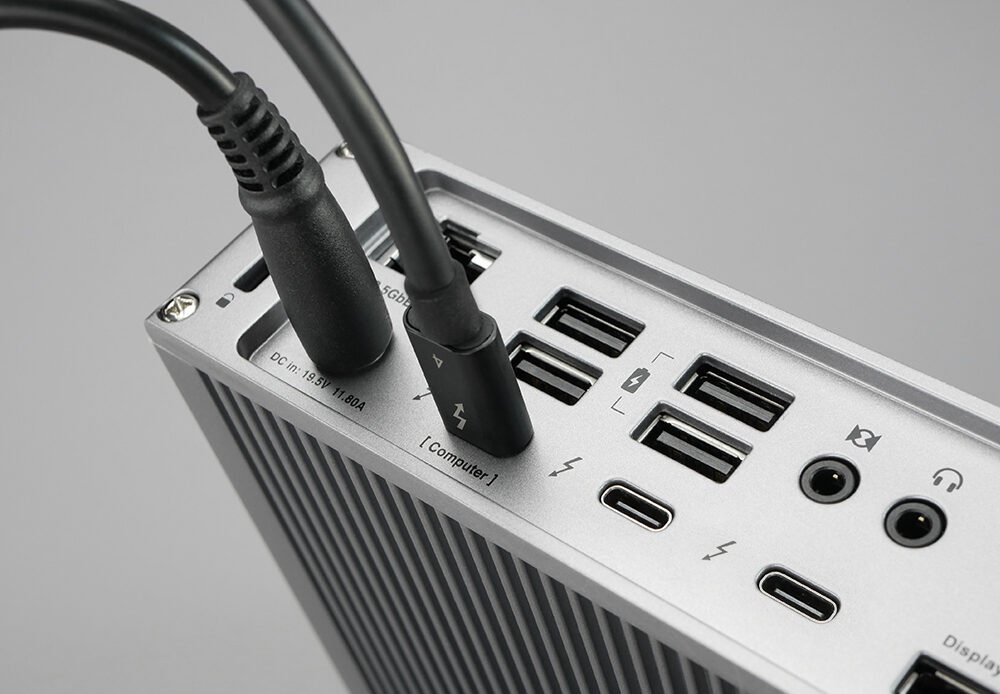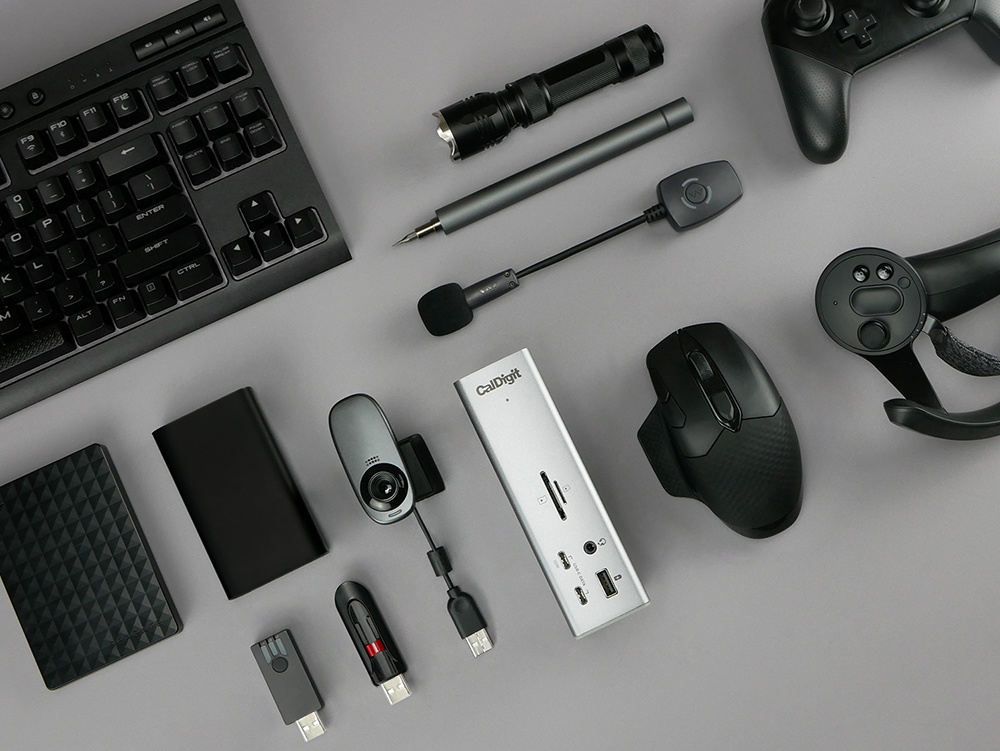Gizmo of the Week: CalDigit’s TS4 Thunderbolt 4 Dock
It’s one of the most boring tech devices on the market, but it’s also one of the most convenient for a laptop-based workflow.

The classic model of a desktop work set-up was simple. There was a tower PC, often on the floor, plugged into a monitor, and a wired mouse and keyboard plugged into them, and that was about it. If you wanted to access a printer or use a thumb drive, you just plugged them into the tower computer, as you did for Ethernet.
It was simple but bulky and inconvenient. So, as the power of laptops increased, people gradually moved to laptop-based desktops. As a man in my twenties, I’ve never personally owned a tower PC, with all of my computing — personal work, playing video games, and writing — courtesy of docked laptops.
The advantage is that it’s easy to move your work with you — simply unplugging from your station to bring all your work to a cafe — but there’s a compromise here. If your laptop is thin and light, it won’t have enough ports to connect to your speakers, monitor, webcam, and so forth; but if it does, unplugging them all is a complete pain.
And so, enter the Thunderbolt dock; a relatively expensive device that I’d been putting off buying for some time. Ultimately, all it does is bring back the port convenience of a tower PC but for the laptop space; and though the $379 price seems rather high, the convenience is worth it.
With my Asus Zenbook S 16, I just plug it into the dock with one USB-C cable, and it instantly connects to my monitor, microphone, webcam, monitor light bar, ethernet cable, keyboard, mouse dongle, and wired audio system — with DAC, headphone AMP, equalizer, and speakers. And all the while, it’s charging. Then, to take the laptop with me, I just unplug that cable.
The Thunderbolt Dock market was sparked by the release of the 2015 MacBook, which released with a single USB-C port, and nothing else. The market has many options, but CalDigit has consistently made the most reliable, premium, compact docks with all the features a home user would need. It may seem excessive for your current work set-up, but I recommend buying a dock with more ports than you need so that you can grow into it.

On the front, you have a high-speed USB 3.2 Gen2 USB-A port — providing 7.5-watt power delivery for charging a phone — along with two USB-C 3.2 Gen2 ports, one of which also supports 20W power delivery.
There’s also a high-quality headphone-microphone combo jack, an indicator light, and a micro SD and full SD card slot. These ports should generally be unoccupied, used for items you remove — like SD cards for cameras, thumbdrives, and so forth — and then the main ports at the back are what you connect to your permanent devices.

On the rear though, you have the majority of the ports, with a 2.5 gigabit Ethernet port; a security slot, four USB 3.2 Gen2 USB-A ports, audio in/out ports, two Thunderbolt 4 USB-C ports, carrying 15W of power, another carrying 98W of power — which you connect your laptop to — and a fourth USB-C port, with 3.2 Gen2 speeds, for data. There’s also a DisplayPort 1.4 port to round out the 18 available, and my only complaint is that it should probably have HDMI for more monitor flexibility. However, given that it can run dual 4K monitors at high-refresh rates — or an 8K display — it’s hardly restricting your monitor options.
$379 is a lot of money, but it’s the most complete and convenient package on the market, and I don’t regret buying mine in the slightest. Plus, its silver aluminum casing reminds me a little of a Rimowa suitcase and is stylish enough not to be an eyesore on your desk.

This is a Thunderbolt 4 dock, initially released in 2022, and — with Thunderbolt 5 laptops and monitors starting to come on the market — there is bound to be a CalDigit TS5 soon. You might want to wait until then, in case CalDigit puts the TS4 on sale, but I’m unlikely to recommend a TS5. Even if you eventually buy a Thunderbolt 5 capable laptop, the bandwidth difference isn’t massive, and there will be a price premium.

